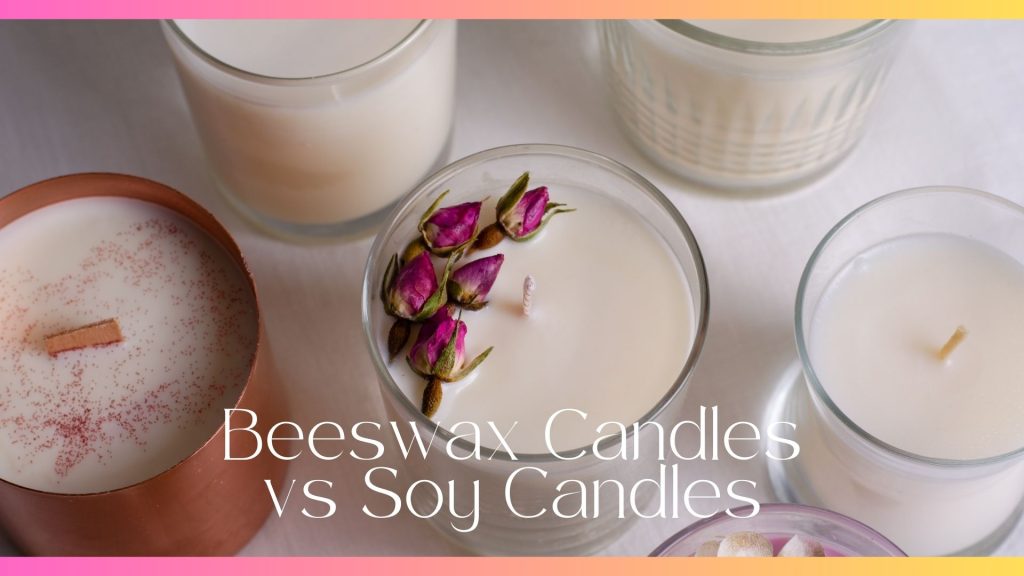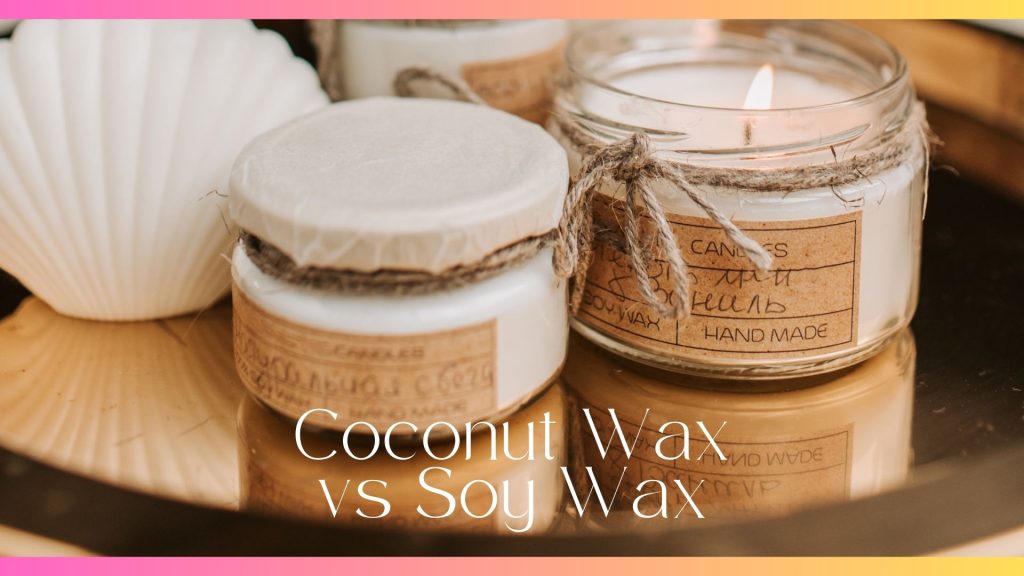Curious to know how do scented candles work? Here are four basic things you should know to understand how candles really work!
When I first started having interest in candles, I really had a deep thought on how it all works. Because truthfully, “where does the wax go or how does it deplete?!” – so I understand your concern. We have all been there!
In this article, I’ll be sharing four main things you should know about scented candles that should clarify your question of “how does a scented candles work”.
Disclaimer: This post may contain affiliate links. This means I may earn a small commission (at no cost to you) if you sign up for a program or make a purchase using my link!
Related Posts:
- 7 Things To Compare Coconut Wax vs Soy Wax
- How To Use Scented Candles – 8 EASY Steps
- 5 Factors To Consider On How Much Fragrance Oil To Add To Soy Wax?
Understanding How Do Scented Candles Work
What Makes A Candle
You’ll first need to understand the basic composition of scented candles to fully comprehend how it all works. Scented candles found online and in stores are typically made of three primary components – which are wax, fragrance oils and a wick.
The types of waxes in candles can differ from paraffin wax, soy wax, coconut wax and beeswax – each with distinct characteristics that affect the final candle’s scent dispersion and burn time. They are then paired with fragrance oils that can be naturally made or artificially made to impart specific scents – fruity, floral, warm or woody.
Wicks are quite straightforward as they’re usually made of cotton, a cotton blend or wood. They are used mainly for lighting up the candle and to serve as a conduit for heat transfer (from the wax to the flame) during the candle’s burning.
Every scented candle you’ll come upon will have these three elements that makes up the final product. People usually have their own preferences for types of wax/fragrance/wick so be sure to find out yours!
How Fragrances Are Released
It is not enough to know the composition of a candle, as you’ll need to understand how fragrances are effectively released when candles burn. It does involve some interplay of chemistry and physics – but nothing too complicated for us normal people to grasp.
Once you light up a candle, the heat from the top flame should melt the wax causing the top surface to liquefy. The molten wax is then absorbed by the wick and travels up to the flame through capillary action, where it undergoes vaporization. It is through vaporization that fragrances are released into the surrounding air and you will smell the enchanting aromas fill up a space (as a user).
Some fragrances diffuse better than others, as the size of fragrance molecules can differ (something unnoticeable for a typical candle maker). Smaller molecules disperse faster which helps in getting the scent distributed in a room.
What’s easier to measure would be the temperature of the flame. Higher temperatures lead to faster vaporization and diffusion which would affect the rate of fragrance release. How to control these you might ask? You’ll need to look into factors like candle size, wick diameter, and flame height – as they all influence the intensity and longevity of scent dispersion.
Why People Love Scented Candles
If you’ve never used candles yourself, you probably don’t know why people love candles so much – scented candles, specifically. The reason lies with the psychological effects of lighting up one!
Scented candles when lit gives a warm feeling to a space and fills it up with aromas that are intended to affect one’s mood, cognition and even behavior. I personally go for relaxing aromatherapy candles as some days can feel more overwhelming than others. They help calm me down especially at night when it’s nearing bed time and I want to avoid sleep issues.
A personal favorite scent of mine would be lavender as it is meant for stress relief and deep relaxation. If you need scents that uplift moods and could increase alertness during the day, I recommend going for citrus fragrances, such as lemon or orange.
What many people don’t know is – the sense of smell is intricately linked to our limbic system (the brain’s emotional center). It governs emotions, memories, and instinctive responses which is also correlated with relaxation and invigoration. So if people think scented candles are a joke, you have a scientific reason to explain why it’s not!
The act of burning scented candles on its own can also serve as a form of aromatherapy, as it promotes mindfulness and general well-being. This is why a lot of us today incorporate scented candles into our everyday self-care routines – we all need an escape from the busy world.
Environmental Impacts
There are certainly questions about the environmental impacts of candles and scented candles. Companies and candle makers have moved from using paraffin wax to using more sustainable alternatives like soy wax, coconut wax and beeswax. They produce fewer toxins and generally have a lower carbon footprint.
Candles that are made of paraffin (derived from petroleum) may release harmful pollutants and petro-soot when burned, causing detrimental indoor air pollution. This makes it unfavorable especially when used in small spaces and with children around.
If you’re concerned about using eco-friendly products (which you should be), then I would recommend purchasing soy candles or beeswax candles. If you’re an aspiring candle maker, then you would know which type of wax you should be using for the long term.
The use of candles, like many other products, will also bring up concerns about packaging materials and waste management. As a user, it’s best that you purchase candles that uses recyclable or biodegradable packaging to make your consumption sustainable and help lessen the environmental impact of candles.
Frequently Asked Questions (FAQs)
Scented candles are supposed to make the room smell of scents it contains. As an example, vanilla scented candles should emit vanilla scents when burning. On one hand, candles that are unscented will not release any fragrances into the air.
Scented candles typically last from 20 to 50 hours depending on a few factors. This includes the type of wax used, candle size and wick size. The fragrance that come with a candle should last as long as the wax is still unfinished and it should no longer emit scents when wax runs out.
Bottom Line
We can talk all day about candles because there’s just too much to talk about. As a complete beginner, the four things I’ve explained above is all you need to know – for now!
The process of making candles and using them are two other things you should definitely learn about. If that’s something that interests you, I’ve compiled a step-by-step guide on how you can use scented candles the right way.
Whether you’re a user or a candle maker, I hope you enjoy your candle journey. Find out what kind of scented candles suit you best and be a conscious consumer while at it.


